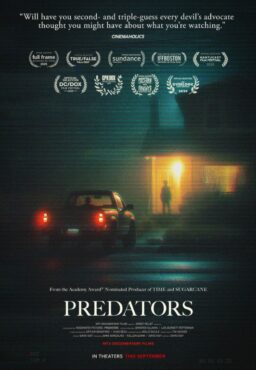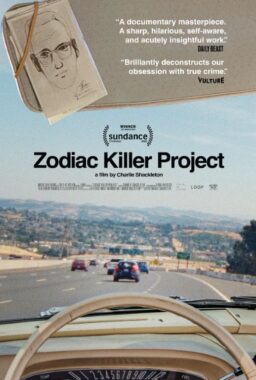Q. It’s said no one ever went broke underestimating the intelligence of the American public. “Harry Potter and the Philosopher’s Stone” is an excellent film up here in Canada, as was “The Madness of George III.” I wonder if the same can be said for the U.S. releases “Harry Potter And The Sorcerer’s Stone” and “The Madness Of King George.” The point of course, is that these minor title details were changed for American audiences on the assumption they are too stupid to handle the concept of the philosopher’s stone of alchemical fame, or to realize seeing George III doesn’t mean you’ve missed parts I and II. Are these decisions made because the suits think I’m really dumb, or is it because they are? (Brady Sylvester, Red Deer, Alberta)
A. Let’s say they think you’re as dumb as they are when they make the decisions. The Harry Potter title change was made not by Warner Brothers but by the book publishers, Scholastic, who feared American readers might be scared off by the word “philosopher.”
Q. In “Harry Potter,” when the stone is referred to, is the line “the sorcerer’s stone” in all versions? Or is it referred to as “the philosopher’s stone” in the UK, Canada, Australia, etc.? (Jean Davis, Kansas City MO)
A. Director Chris Columbus says he shot two versions of the dialog, one with “philosopher,” the other with “sorcerer.”
Q. So let me get this straight about “Shallow Hal“‘s new girl friend. She’s fat, and the way to portray her inner beauty is that she is thin and stunningly beautiful on the inside. And the girls who are thin on the outside must be ugly on the inside and the best way to show it is to make their inner selves fat? Who decided clothes hangers were beautiful? Is your soul or spirit fat or thin? There are a bunch of ways this could have been visualized without fat equaling ugly. (Melody Parish, Aurora, CO)
A. I’ve received heartfelt messages both for and against the film. This is from Mike Parnell of Burgaw, NC: “Being a person who is extremely large I could be offended by some of the images in the movie. The question I have is, why do moviegoers want people to have epiphanies where they get it all at once? I find myself struggling to get my mind around some of the stuff I face in my own life. It takes time for me to understand. Isn’t the title enough to warn us that Hal is not going to be able to correct the bad instructions he got from his father (in a drug induced haze) merely because of an encounter with Tony Robbins? I think it is good to see the growth of characters in a film.”
Q. In your review of “Shallow Hal,” you write, “Only the most attentive audience members will catch the Farrellys’ subtle reference to a famous poem by Emily Dickinson.” Though I think I know her poetry, I must have missed the reference. (Sara Jane Berman, East Williston NY)
A. When Shallow Hal’s father dies, a fly buzzes.
Q. You mentioned in your review of “The Last Castle” that there were no bodies lying around after the battle. The director, Rod Lurie, wrote you to say there were no bodies because only rubber bullets were fired by the guards. This shows a lack of understanding about rubber bullets. They don’t do their job if they don’t put people down; they’re designed to be incapacitating. The “reality” of the situation, in my mind, would have been prisoners lying unconscious. (Anthony J. Hernandez, Denver CO)
A. I think the real reason we saw no bodies is because it would have marred the heroism of the Redford character to show him surrounded by his fallen comrades.
Q. You said “Kandahar” has not had a North American release. Actually, it has played in Canada and now has been picked up by Avatar Films for U.S. release in January 2002. (Larry Thomas, Cincinnati, Ohio)
A. This is a film whose time has come. Directed by Mohsen Makhmalbaf, “Kandahar” was an official entry at Cannes 2001. It tells the story of an Afghan woman who immigrated to Canada 20 years ago, and now tries to sneak back into Afghanistan to save the life of her sister, who has threatened suicide. The film paints a harrowing portrait of women without rights or even identities.
Q. Re the discussion about how the Coen Brothers filmed “The Man Who Wasn’t There” in color and then converted it to black and white: On a recent Charlie Rose show, they said they chose to use color stock because few people film on b&w stock anymore, and film companies haven’t made any significant advances with b&w film since the 50’s. (Jeff Lanctot, Seattle WA)
A. Here’s elaboration from cinematographer Steven Poster: “The few b&w movies that get made today are almost always shot on color film stock. Sadly there are few film laboratories that process b&w anymore. Another reason is that b&w film stocks have not been improved for over 30 years while color film stocks have been continuously improved. This allows for more versatile shooting if you use color films. Great improvements in sensitivity (film speed), texture (granularity) and dynamic range (number of steps of gray between the deepest shadow and the highest highlight) have been made. By shooting on color film and printing on several choices of b&w printing film stock, the cinematographer has more effective ways of creating different styles for b&w movies. Even European movies are done this way now. For example, Patrice Leconte’s exquisite “Girl on the Bridge” was filmed this way.”
Q. I went to see “The Man Who Wasn’t There.” Having seen the trailer and read some reviews, I assumed that the film was being shown entirely in black and white, although it had been filmed in color. To my surprise, the first reel of the film ran in color before abruptly switching to b&w at the beginning of the second reel. Are the Coens going for some sort of Wizard of Oz/Pleasantville effect, or is this a mistake? (Matthew Long, Prince George BC)
A. A mistake so big that if it had been a postage stamp instead of a movie, collectors would be fighting for it.











